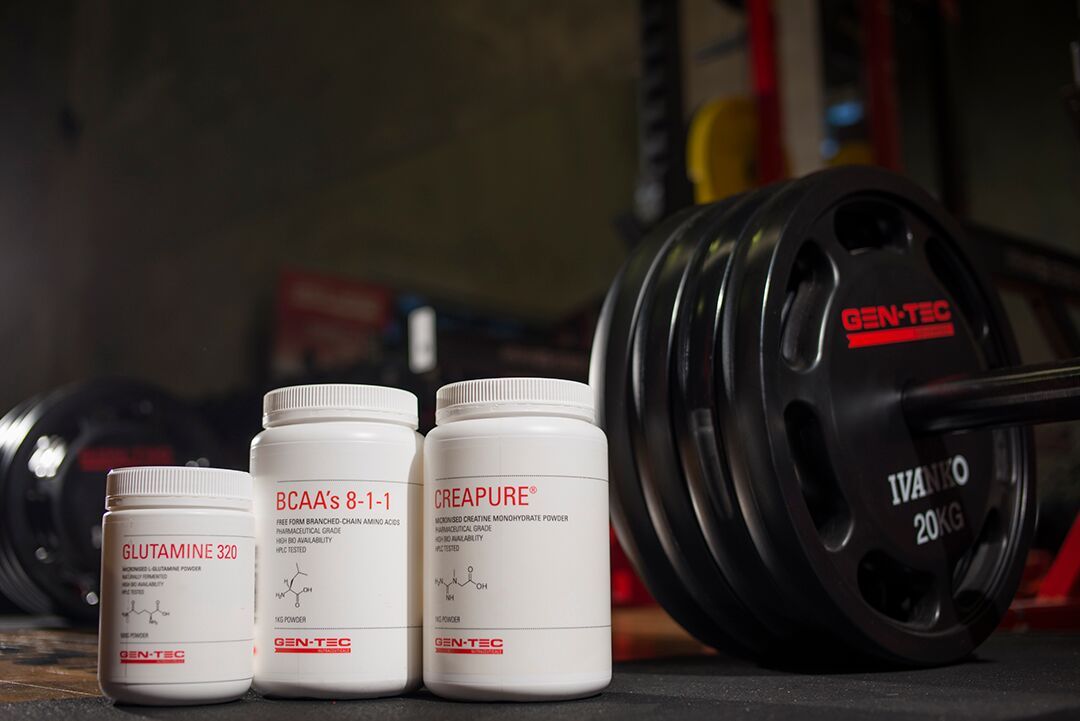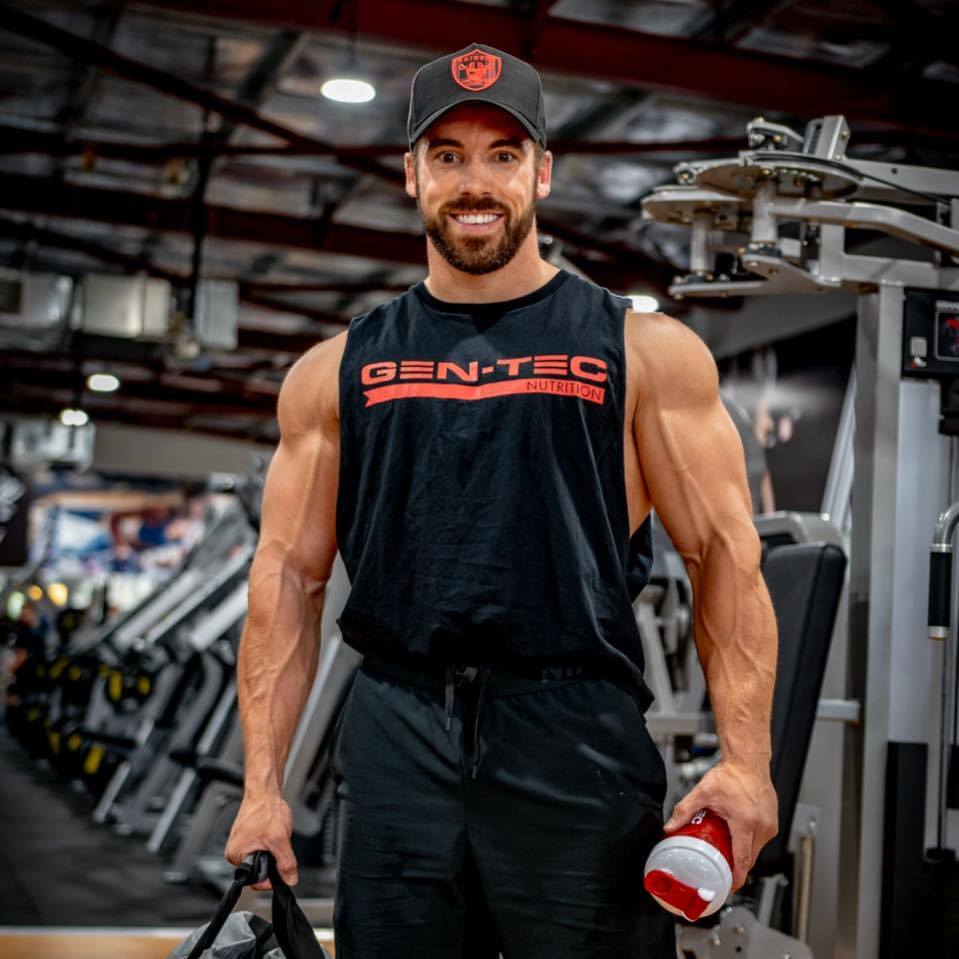Your Cart is Empty
Free shipping for orders over $100
Free shipping for orders over $100
Free shipping for orders over $100

December 03, 2019 10 min read
By Dane Ivicevic: BSc, GradDip, GradCert, Dip, TAE
Nutritionist, Exercise Scientist and Clinical Biochemist
What creatine is best for athletes: The facts
Creatine supplementation has a long history of use in athletes and scientific research behind its performance-enhancing effects (Miller et al., 2013). In 1990 Olympic athletes were the first to report beneficial effects of creatine (Cr) use. After 20 years of research, it is accepted as one of the leading supplements for athletes with proven benefits and is not banned by the International Olympic Committee(Jäger et al., 2011). To date, there have been countless forms of Cr developed for use by athletes, however, their efficacy is questionable and undoubtedly there is confusion amongst athletes as to which one to use.
Therefore, this article aims to debunk the common misconceptions surrounding Cr supplementation (CrS) whilst providing an insight into which form of Cr is really the best and why athletes should consider taking it.
The food and supplement industry has been flooded with new Cr products, all claiming to have superiority over Creatine Monohydrate (CM). From better absorption to reduced side effects to superior gains in performance, the new Cr derivatives on the market are certainly stirring a storm of confusion for consumers on which form of Cr is really best to use. In order to understand this, we must understand Cr and what it does.
What is creatine and how does it work?
Creatine is a compound synthesized by the amino acids glycine and arginine which acts as a muscle fuel under intense training. The human body synthesises about 2g per day and also turns over about 2g per day via creatinine (broken down product of Cr) conversion which is then excreted out by the urinary system, we also consume about 1-2g daily through our diet (omnivorous)(Persky and Brazeau, 2001, Gufford et al., 2013). Cr is primarily stored in the skeletal muscles where it becomes phosphorylated (adds an energy phosphate group) which can now be used as a muscle fuel in the form of Phosphocreatine (PCr)(Rawson et al., 2011). The ATP-PCr energy system, which is the energy system that fuels brief high intensity bouts of exercise, uses up its fuel (PCr) within 5-10 seconds of maximal effort exercise like sprints, jumps and repeated high intensity muscle contractions such as weights, therefore CrS canprovide up to 50% more fuel in the muscle to complete its task (Deakin, 2010, Bird, 2003).
The ergogenic (performance-enhancing) effects of Cr in the form of CM are well documented in the literature (Deakin, 2010, Jäger et al., 2011). These include CM increasing PCr resynthesis (more fuel) during repeated high-intensity intervals as well as increased performance in events lasting 6-20 seconds with rest intervals of 20 seconds to 5 minutes. In regards to strength and muscle growth it is well established that CrS increases lean body mass (LBM) as well as significant gains in strength (Ormsbee et al., 2012, Bird, 2003, Deakin, 2010). It is however unclear as to whether this is because Cr increases muscle protein synthesis (MPS) and is due to this increase in training ability (strength) or a combination of the two that leads to greater muscle mass (Deakin, 2010). It has been theorized that it is most likely a combination of the two that leads to the long term development in muscle development (Deakin, 2010).
Creatine loading
When consumers begin a Cr supplement, it is recommended to undergo a Cr loading phase, similar to carbohydrate loading for athletes (Deakin, 2010). Various doses of Cr have been employed to see which will increase muscle Cr content the most and thus leads to a greater ergogenic effect. The majority of research indicates that athletes following a Cr loading protocol of 4-6 doses at 5g, totalling 20-25g per day (or 0.3g/kg/bw) for 3-6 days, increased muscle Cr content to the established threshold of 160mmol/kg of dry weight muscle (Bird, 2003, Deakin, 2010). This is roughly a 20-50% increase from base line values and is also observed to remain trapped in the muscle cells for up to 4-5 weeks before returning to baseline after CrS has stopped (Bird, 2003, Deakin, 2010).
Moreover it has been established that 30% of subjects can be non-responsive to the Cr loading protocol and therefore it was concluded that Cr transport is in part mediated by the glucose and insulin pathway (Sodium-dependent muscle Cr transport), henceconsuming a nutrient mix of carbohydrates (CHO) and protein increasedthe effectiveness of CrS (Deakin, 2010, Pittas et al., 2010). A study in 2010 reported that the co-ingestion of amino acids (leucine, phenylalanine), CHO and proteins with CrM increased insulin-mediated transport of Cr and therefore resulted in a 30-50% increase in muscle Cr content compared to Cr alone (Pittas et al., 2010). Thus for effective Cr loading a combination of CHO (40g+), Protein (20g+) and amino acids (leucine, phenylalanine) works synergistically with Cr to increase muscle Cr uptake, reduces Cr breakdown/excretion and provides a better ergogenic effect.
Does Creatine have side effects?
Side effects due to creatine use is often a common misconception that has many people unsure about what is actually fact or fiction. Despite some studies reporting that during a Cr loading protocol some subjects experience gastrointestinal tract (GIT) discomfort, nausea, muscle cramps, headaches and increased kidney strain, the conclusive evidence as a whole reports that the occurrence of these side effects in Cr users is not greater than those subjects taking a placebo (nothing) and that many well-designed studies failed to find an increased prevalence amongst Cr users (Deakin, 2010). The increase in kidney function (high filtration rate) may only be present in consumers who have pre-existing renal dysfunction (renal disease) which in this case CrS is not recommended, however nor is a diet high in protein due to the same reason. Therefore any perceived risk associated with taking Cr at the recommended dose in healthy people is completely unfounded and lacks evidence to claim so (Deakin, 2010).
What are the differences between Creatine derivative?
On the market today are Cr derivatives all claiming to be more efficacious than CM. A few crucial factors need to be identified in order to compare the growing list of CrS. A good CrS requires an effective combination of correct solubility so it dissolves into an active compound, the correct stability so it doesn’t breakdown into an inactive form, great bioavailability so it absorbs through the GIT and is taken up by the target cells and finally its ergogenic effect. In addition, these components the quality and purity of a Cr supplements can vary significantly with many products containing contaminants above acceptable ranges(Moret et al., 2011). One way to ensure minimal contamination and maximal purity is to use an 18 stage extraction process with a 320 mesh filter size. This 320 filter is basically I finer filter that only allows a certain size particle to pass through, thus above 320 only allows the finest particles through whilst capturing the contaminants. A brief breakdown of all these components is detailed below and within Table 1.
Creatine Salts
The new edition of Cr salts like Cr citrate, Cr malate and Cr nitrate have been proposed to be superior to CM by having an ability to provide more ATP (energy) and be more bioavailable than CM. However, no studies to date have compared Cr salts to CM, nor have they shown ergogenic effects that surpass the observed effects of CM. Despite the claim in enhanced bioavailability with Cr salts, it was identified that Cr citrate (salt) was less stable than CM and therefore possessed more potential to break down to creatine under certain pH and temperature conditions in which CM would not (Jäger et al., 2011). In addition, the same study concluded that Cr salts contain less active ingredient (Cr) per gram, therefore combined with its lower stability over CM, Cr salts would certainly not increase muscle Cr content greater than CM (Jäger et al., 2011). Another Cr salt called Cr malate which has a malic acid compound attached to it proposes to increase ATP production by enhancing the kreb cycle (aerobic energy cycle) by the addition of malate which is one of the 8 steps in the cycle. The pitfall to this theory is that the kreb cycle is regulated by rate-limiting steps and various checkpoints which in this case means the addition of one step (malate) does not speed up or enhance the process under normal physiological conditions. However despite this, one possible advantage to Cr salts is that they may dissolve better in liquid compared to Cr counterparts, resulting in a better-tasting beverage, however, this does not support an increased ergogenic potential (Jäger et al., 2011).
Creatine Esters and Alcohols
The most common Cr derivative in this class and across all other Cr forms is known as Creatine Ethyl Ester (CEE). The claims that are associated with its use are that it requires no loading phase, has no associated side effects and has the highest absorption compared to CM. However, research tells a very different story, concluding that there is little to no evidence that CEE even has any ergogenic effect at all, let alone be superior to CM (Jäger et al., 2011, Giese and Lecher, 2009). One common claim is that CEE has better absorption with higher plasma (blood) Cr content upon ingestion, however plasma Cr must also then be taken up by the target cells (muscles), thus a lower plasma Cr level would be observed which doesn’t appear to occur much with this compound (Jäger et al., 2011). Therefore a large portion of CEE is converted to creatinine under physiological conditions, reducing muscle Cr content and thus having minimal ergogenic potential (Jäger et al., 2011, Giese and Lecher, 2009). The reason for this is reported to be because CEE is more prone than CrM to nucleophilic attack (removing the Ethyl ester) by compounds in the body resulting in conversion to creatinine(Giese and Lecher, 2009). Creatine monohydrate, on the other hand, can remain very stable in very low pH conditions like the stomach and also in very alkaline conditions like the duodenum and small intestine (past the stomach). Therefore minimal Cr to creatinine conversion occurs throughout the GIT which creatinol and CEE does not handle well (Jäger et al., 2011, Giese and Lecher, 2009). Finally considering there is no solid evidence of side effects from the recommended dose of CrS, CEE certainly does not gain a superior edge over CM in this regard (Deakin, 2010).
Buffered (alkaline) creatine
Kre-Alkalyn® (KrA) is reported to be a protected form of Cr due to its more basic (alkaline) properties compared to CM as its reported to be at a pH above 12 which is a range in which Cr does not breakdown well so it is claimed to reach the muscle cells better than CM due to better stability (Jagim et al., 2012). However, despite this promising theory, the evidence indicates that KrA samples in water solutions had higher creatinine levels than CM and were also the most contaminated form of CrS (Moret et al., 2011). Moreover, KrA is proposed to require no loading phase or poses any side effects due to the creatinine conversion, unfortunately, there is no evidence to support such claims within fact there is strong evidence to suggest KrA does not increase muscle creatine very well at all, thus it would be the least effective CrS on the market to date (Jagim et al., 2012, Jäger et al., 2011).
Table 1.
| Form of Creatine | Proposed benefit | Evidence |
| Cr Monohydrate (90%) |
|
|
|
Creatine salts (40-70%)
|
|
|
|
Creatine Esters & Alcohols
|
|
|
|
Buffered Creatine
|
|
|
Summary
Regardless of the mind field of information circulating out in the industry today with CrS, one thing is certain and that is that CM has been the most extensively studied form of Cr with a long history of proven results associated with its use. The variations in kinetics that other Cr forms may provide aren’t proof of greater muscle Cr content alone and definitely aren’t proof of greater ergogenic potential. Consuming high quality Cr at a loading dose of 5g 4-6 times daily for 3-6 days followed by a maintenance does of 5g daily with a nutrient mix of CHO, protein and amino acids, appears to be the most effective protocol to optimal performance.
References:
BIRD, S. P. 2003. Creatine supplementation and exercise performance: A brief review. Journal of Sports Science and Medicine, 2, 123-132.
DEAKIN, L. B. A. V. 2010. Clinical Sports Nutrition, NSW, McGraw-Hill, Australia Pty Ltd.
GIESE, M. W. & LECHER, C. S. 2009. Non-enzymatic cyclization of creatine ethyl ester to creatinine. Biochemical and Biophysical Research Communications, 388, 252-255.
GUFFORD, B. T., EZELL, E. L., ROBINSON, D. H., MILLER, D. W., MILLER, N. J., GU, X. & VENNERSTROM, J. L. 2013. PH-dependent stability of creatine ethyl ester: Relevance to oral absorption. Journal of Dietary Supplements, 10, 241-251.
JÄGER, R., PURPURA, M., SHAO, A., INOUE, T. & KREIDER, R. 2011. Analysis of the efficacy, safety, and regulatory status of novel forms of creatine. Amino Acids, 40, 1369-1383.
JAGIM, A. R., OLIVER, J. M., SANCHEZ, A., GALVAN, E., FLUCKEY, J., RIECHMAN, S., GREENWOOD, M., KELLY, K., MEININGER, C., RASMUSSEN, C. & KREIDER, R. B. 2012. A buffered form of creatine does not promote greater changes in muscle creatine content, body composition, or training adaptations than creatine monohydrate. Journal of the International Society of Sports Nutrition, 9, 43-60.
MILLER, D. W., AUGUSTINE, S., ROBINSON, D. H., VENNERSTROM, J. L. & WAGNER, J. C. 2013. Chapter 40 - Oral Bioavailability of Creatine Supplements: Insights into Mechanism and Implications for Improved Absorption. In: BAGCHI, D., NAIR, S. & SEN, C. K. (eds.) Nutrition and Enhanced Sports Performance. San Diego: Academic Press.
MORET, S., PREVARIN, A. & TUBARO, F. 2011. Levels of creatine, organic contaminants and heavy metals in creatine dietary supplements. Food Chemistry, 126, 1232-1238.
ORMSBEE, M. J., MANDLER, W. K., THOMAS, D. D., WARD, E. G., KINSEY, A. W., SIMONAVICE, E., PANTON, L. B. & JEONG-SU, K. 2012. The effects of six weeks of supplementation with multi-ingredient performance supplements and resistance training on anabolic hormones, body composition, strength, and power in resistance-trained men. Journal of the International Society of Sports Nutrition, 9, 49-60.
PERSKY, A. M. & BRAZEAU, G. A. 2001. Clinical pharmacology of the dietary supplement creatine monohydrate. Pharmacological Reviews, 53, 161-176.
PITTAS, G., HAZELL, M. D., SIMPSON, E. J. & GREENHAFF, P. L. 2010. Optimization of insulin-mediated creatine retention during creatine feeding in humans. Journal of Sports Sciences, 28, 67-74.
RAWSON, E. S., STEC, M. J., FREDERICKSON, S. J. & MILES, M. P. 2011. Low-dose creatine supplementation enhances fatigue resistance in the absence of weight gain. Nutrition, 27, 451-455.
Comments will be approved before showing up.

June 24, 2020 3 min read

May 07, 2020 4 min read

April 01, 2020 3 min read
Be the first to know about upcoming sales and promos. Get a 10% discount coupon when you subscribe!